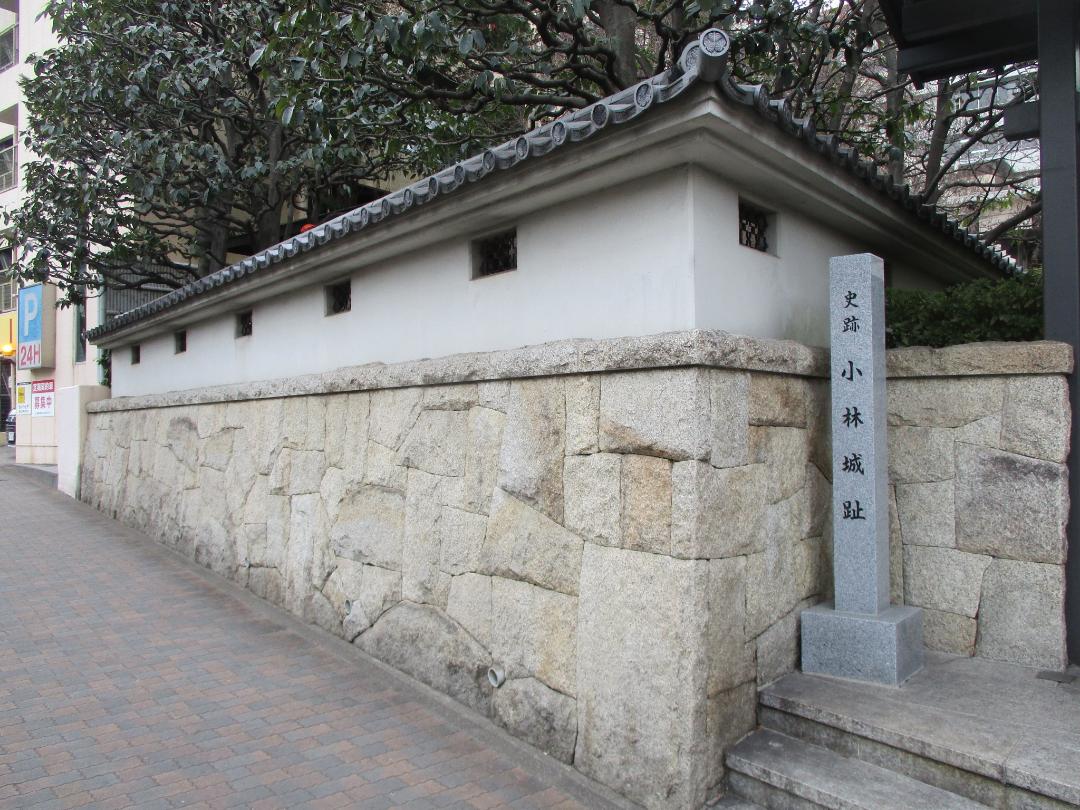Kobayashi Castle (Owari)
Kobayashijō is a former hirajiro (flatland castle) site in downtown Nagoya. The site today is now a temple, Shōjōji. The temple has a nice gate, as well as some mock stone-piled walls and parapet walls with loopholes, so it does look somewhat like a castle. It was after the 2025 castle expo in Nag
History
Kobayashijō was built in 1548 by Maki Nagakiyo as his residence. He lived here with his wife, the sister of Oda Nobunaga, nicknamed Kobayashi-dono after the castle. Kobayashijō was abandoned when Nagakiyo died in 1570.
In the Edo period the ruins of the fort were swallowed up by the expanding town around Nagoya Castle, and Yagyū Toshitoshi was given a residence here. Hyōgonosuke, as he was also known, was a master of the Shinkage-ryū school of swordsmanship and the tutor to Tokugawa Mitsutomo, the second lord of the Owari Domain. It is said that Miyamoto Musashi encountered Hyōgonosuke in the street and, after sizing each other up, the two quickly became like old friends, and Miyamoto was received at Hyōgonosuke's residence.
In the late 17th century, the site became the temple Shōjōji, which still occupies the site today, albeit seemingly without any original architecture. Cenotaphs to the Maki Clan can be found at the temple.
Field Notes
Kobayashijō is a former hirajiro (flatland castle) site in downtown Nagoya. The site today is now a temple, Shōjōji. The temple has a nice gate, as well as some mock stone-piled walls and parapet walls with loopholes, so it does look somewhat like a castle.
It was after the 2025 castle expo in Nagoya that, enjoying the mildly warm start-of-spring weather, I started rambling around the city, and, just by chance, came across this site unexpectantly. First I noticed the nice temple gate before noticing a stone marker with the name of a castle on. Lucky!
Even though someone has put a marker for this site on Google Maps, they have provided no information it, and I could find none on-site, but some castle-bloggers have covered it. It seems as if the castle-marker stele was moved from within the temple grounds to in front of the gate. That's just as well or I would not have found this place.
After finding the "castle" / temple, which has a nice garden gated behind the walls, and visiting the nearby Hisaya-ôdôri garden, I decided to follow the Shinhorigawa ('New Moat River') down to Kanayama Station. The river goes down past Atsuta-jingū before reconnecting to the Horigawa ('Moat River'). These rivers form(ed) a loop starting at Nagoya Castle and going down to Atsuta Shrine. Horigawa is a canal built in 1610 by Fukushima Masanori; it served as an outer moat for Nagoyajō, as well as the main artery for river transportation in the castle-town. However, the Shinhorigawa, also artificial, was not completed until the Meiji period.
| Castle Profile | |
|---|---|
| English Name | Kobayashi Castle (Owari) |
| Japanese Name | 尾張小林城 |
| Founder | Maki Nagakiyo |
| Year Founded | 1548 |
| Castle Type | Flatland |
| Castle Condition | Ruins only |
| Historical Period | Pre Edo Period |
| Artifacts | Mock Ishigaki & Dobei |
| Features | stone walls, walls |
| Visitor Information | |
| Access | Yabachō Station on the Meijō Line; 5 min walk |
| Hours | 24/7 free; temple |
| Time Required | 15 mins |
| URL | Castle Website |
| Location | Nagoya, Aichi Prefecture |
| Coordinates | 35.16133, 136.9075 |
|
|
|
| Admin | |
| Added to Jcastle | 2025 |
| Contributor | ART |
| Admin Year Visited | Viewer Contributed |
| Friends of JCastle | |
| Jōkaku Hōrōki | |
| Jōkaku Shashin Kiroku | |











